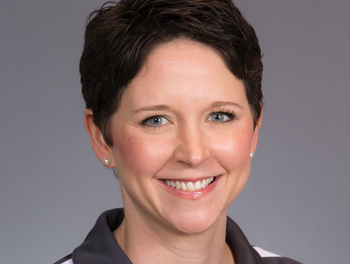In the wake of suburban school shootings, Westfield High School developed a program to reduce student isolation and promote belonging.

Getty Images
On November 30, 2021, an armed sophomore attending Oxford High School in a suburb of Detroit, Michigan, walked through the halls of his school and began to “methodically and deliberately . . . aim a gun at students and fire [his] weapon . . . When students began to run away, [he] allegedly continued to go down the hallway at a ‘methodical pace’ and shot inside classrooms and at students who hadn’t escaped” (Elamroussi, 2021). This 10th grader ultimately murdered four fellow classmates and injured seven others. Since April 1999, when two armed seniors at Columbine High School in Littleton, Colorado, murdered 12 fellow students and one teacher in what, at the time, was considered the most horrific school shooting in U.S. history, school shootings have become tragically commonplace throughout the United States. Not only have they launched ceaseless political debates about gun control and student safety, but they’ve called into question the trust many Americans had placed in the safety of suburban life.
Following the tragedy of Columbine, many suburban districts began to reevaluate the ways their students are integrated into their school communities. Our own community at Westfield High School, in northeastern New Jersey, is similar to that of Columbine. Both schools are located in predominately white, affluent suburban areas, and both have strong academic outcomes. So, for us, the Columbine shooting served as a wake-up call, prompting us to ask how we could build a more trusting and inclusive environment, where students’ social and emotional needs are more fully addressed, and where no kids slip through the cracks. Our answer was to create a program called The Transition Project (or, simply, Transition).
Many transition programs, such as the Center for Supportive Schools’ Peer Group Connection (PGC, 2009), focus on helping students achieve academically and become college- and career- ready (Grey, 2019; Lorenzo, 2017). But Westfield’s students didn’t need this kind of intervention; they needed support for community-building, with a focus on ensuring that every student feels known, valued, and respected. Unfortunately, though, we were unable to find program models or research studies that specifically addressed the transition to high-performing, predominately white suburban school districts. So, when creating Transition, we had to chart our own path.
Beyond academic achievement
Over the past 20 years, federal policy making in K-12 education, including the passage of No Child Left Behind and the Every Student Succeeds Act, has aimed mainly to improve academic achievement in public schools (Korte, 2015). However, many students need more than just academic supports. In fact, the link between academic engagement and a sense of belonging has been clearly shown through research (Pope & Miles, 2022). In Westfield, where most students were already achieving at high levels, the more pressing concerns had to do with students’ stress, social isolation, and mental health. As researchers have pointed out, “such highly charged competitive environments provide fertile ground for extraordinary manifestations of violence” (Thompson & Kyle, 2005, p. 422).
It is a statistical reality that, although gun violence is more common in urban schools, high-casualty shootings that occur during the school day have been more likely to occur in predominately white suburban schools (Walker, 2019). Westfield, New Jersey, shares similar socioeconomic income levels and racial demographics (U.S. Census, 2010) as the sites of numerous high-profile school shootings, such as Littleton, Colorado; Newtown, Connecticut; and Parkland, Florida. In fact, following the tragedy at Columbine, MSNBC asked the Westfield community to host a town hall aptly named Lessons from Littleton (LePoidevin, 1999). One Westfield High School student at the time, Justin Delmonico, stated, “The Littleton incident could very well happen here . . . You never really know, anything could happen” and went on to wonder if the killers, Eric Harris and Dylan Klebold, felt like “‘outcasts” and “came to a point where they couldn’t take it anymore” (LePoidevin, 1999, p. 1). Many students, teachers, and administrators across the country had similar questions about whether a sense of disconnection at school could, at least in part, motivate such violence.
We decided that our program should serve every 9th-grade student in the school, instead of targeting only those students who appear to be most at risk.
Following the tragedy at Columbine, Westfield Public Schools started The Transition Project with the goal of fostering trust, promoting a sense of belonging within the school community, and perhaps preventing a similar crisis in our school. Some of our ideas were inspired by a Kappan article by Mary Anne Raywid and Libby Oshiyama (2000) responding to the tragedy. Given that our student body was made of up approximately 2,000 students, we were especially struck by their observation that the size of the school plays a role in relationship formation and the cultivation of trust within the school community: “It is in large schools,” they explain, “where alienation often goes hand in hand with anonymity, that the danger comes” (p. 1).
Research conducted almost two decades later found, similarly, “that smaller schools are less likely to experience acts of mass violence” and “that transitioning from a smaller, more supportive school to a larger, more anonymous school may exacerbate pre-existing mental health issues among potential school shooters” (Baird et al., 2017). As is the case in many U.S. districts, students in the Westfield Public Schools attend 8th grade in smaller intermediate schools and then enter a significantly larger school in the 9th grade. This transition into a larger school — and a highly competitive one — can unfortunately lead to the circumstances that have historically been linked to school shootings. So it makes sense for schools like Westfield High to focus on community-building during and after the transition into 9th grade.
Student-led conversations
While large school enrollments present some challenges, they also have some benefits, including a large number of potential student leaders, who often have great insights into the kinds of activities that will make students feel they belong to the school community. Inspired by the Center for Supportive Schools’ PGC-HS model, we assigned 130 student volunteers in their 11th- and 12th-grade years to assist small groups of incoming 9th graders in transitioning into the larger school community.
Unlike the PGC-HS model, though — which focuses on college- and career-readiness — we prioritized community integration. Further, we decided that our program should serve every 9th-grade student in the school, instead of targeting only those students who appear to be most at risk, as is frequently the case in other transition programs. So, at Westfield, we connect each 9th grader with at least one 11th- or 12th-grade student within the first two weeks of school. By having these students meet seven times during the first semester in small-group sessions (called “outreaches”), our program aims to build a community proactively, rather than react later on to crises rooted in social isolation.
Outreaches use an activity-based approach in which students engage in role-play, project-based learning, and group discussions to explore topics related to building community and ensuring everyone’s sense of belonging and safety in the school community. For example, one outreach focuses on the dangers of stereotypes, how it feels to be the target of a stereotype, and how each individual can actively resist stereotypes and contribute to the overall sense of inclusion at the school. The outreach begins with the group listening to and discussing the lyrics of the song “You have to be carefully taught” from the musical South Pacific, then turning to a discussion of the many sources that teach young people to engage in stereotypes and prejudices, from family, friends, and neighbors to media and society as a whole. The aim is to give students a shared, foundational understanding of how stereotypes are learned and, more important, how they can be unlearned.
Another activity asks students to write down, on an index card, one way they’ve been stereotyped and a stereotype they have heard about another group. Without writing their names or other identifying information on their index cards, they put the cards into a pile, and leaders take turns reading the stereotypes aloud and guiding students in a group discussion, focusing on questions such as, How does hearing stereotypes make me feel? What is the first thing that comes to mind when you hear stereotypes about yourself and others? Where are stereotypes portrayed? How do you think targets of stereotypes may be treated as a result of these statements? Leaders are thoroughly trained to not reinforce stereotypes through this discussion but, rather, to engage students in thinking critically about the sources of stereotypes and the ways in which they can result in individuals and groups becoming isolated, stigmatized, and marginalized.
Through activities like these, students are able to wrestle with a variety of topics that affect how individuals belong to and interact within their community. As evaluations of the program have consistently shown, these discussions tend to result in students trusting their leaders and feeling a strong sense of belonging at the school. In addition, leaders are trained to make sure that 9th graders feel seen by greeting and interacting with them informally in school hallways, cafeterias, and other non-classroom settings.
We think of the Transition approach as one in which trust is “compounded” throughout the school community, beginning with trust among 9th graders and their student leaders, then multiplying as it spreads to leaders and teachers, and then to teachers and administrators, and so on throughout the school. The foundational relationship, though, is the one between the new 9th graders and their student leaders. In a highly competitive school environment, students often think about how they’re doing in school mainly in terms of their academic performance (grades, test scores, and so on). However, Transition encourages them to talk explicitly about the importance of other parts of their lives. And because outreaches are led by peers in small groups, without any type of assessment whatsoever, students are more inclined to engage in open and authentic discussions than they might be if a teacher were guiding the discussion.
Logistics and trust
As coordinators of the program, we rely heavily on the student leaders who participate. The role of Transition leader is highly coveted, with more than 200 11th- and 12th-grade students applying for around 130 positions each year. Leaders are selected during the spring of the previous year based on teacher recommendations, and potential leaders should be dynamic, display a sense of self-awareness in the classroom, be comfortable speaking in front of their peers, and pursue authentic interests outside academics. Selected leaders go through an intensive training program in which they learn and practice discussion facilitation and active listening in addition to having conversations among themselves about the topics that will be covered in Transition outreaches. Trust between adults and student leaders is crucial because student leaders are only lightly monitored by adult advisers in order to promote more authentic sharing.
Outreaches occur during the school day within the health and physical education curricula, which means that 9th-grade health and physical education teachers must give up class time they would normally use to teach their required course content. In addition, Transition leaders have to miss their own health and physical education classes, and sometimes even their lunch periods, during each outreach, so they have to be prepared to make up any missed work. To keep the program going, teachers who lose time with their students have to be persuaded that the program is worthwhile, that student leaders will act responsibly, and that students will continue to meet their academic requirements.
Because the program involves every enrolled 9th-grade student and more than 100 11th- and 12th-grade students, a sizable portion of the school population is involved in the program on outreach day. School administration must trust and empower program advisers to manage the logistics of the program and address the rare disciplinary issues that might arise when groups of students interact in a semi-formal context. Now that the Transition program has existed and run relatively smoothly for almost two decades, the school administration has seen its trust pay off, which has led to even greater trust.
Finally, trust extends beyond the school building into the community of Westfield and the state at large. Instead of being funded by the school district, Transition is funded by the Westfield Municipal Alliance (with some supplemental funding by the state), which is a community-based organization focused on addressing alcoholism and drug abuse; it is a branch of New Jersey’s Governor’s Council on Alcoholism and Drug Abuse. The Municipal Alliance recognizes that because students are members of their community, the Transition project benefits the entire town of Westfield — which is to say that the community’s trust in the school and the students has enabled us to build and continue this program.
The value of building community
Over the 17 years that Transition has been operating in Westfield, measures of harassment, intimidation, and bullying have shown steady decreases (Westfield Public Schools, n.d.). The head of the high school counseling department, Maureen Mazzarese (personal interview, 2021), who has overseen the work of Transition since its inception, attributes the low number of such incidents, despite the school’s large size, directly to the Transition Project. She also emphasized the fact that the school has high levels of student self-referrals for interventions for individual education programs (IEPs) and 504 plans, which shows that 9th graders are becoming more aware of both themselves and the services provided to them by engaging with 11th- and 12th-grade students who can take away any stigma associated with seeking help. These self-referrals begin the process of interventions and allow counselors and mental health professionals to intervene and diagnose where appropriate. When a representative from the New Jersey Department of Education who oversees the implementation of social-emotional learning (SEL) programs in this state observed a Transition outreach, he described Westfield as “ahead of the curve” in building social and emotional competencies (Westfield High School, n.d.).
We believe that many other suburban schools would benefit from shifting some of their focus away from academic achievement and toward community integration. Similarly, we believe the research community should explore how scales such as the Community Integration Measure (McColl et al., 2001), which assesses community members’ level of connection, can be adapted for use by schools. Ideally, longitudinal studies using this or similar measures could be used to evaluate the efficacy of programs like Transition and PCG-HS and to inform how the programs can better serve their students and be implemented in schools across the country. Furthermore, we believe that popular school rankings, such as the one published by U.S. News & World Report, should begin making community integration part of their calculation, instead of focusing entirely on academic outcomes, as is their current practice (RTI International, 2021).
The Transition Project at Westfield High School provides an effective example of how school leaders can take informed, intentional, and proactive steps to building a trusting school community where students feel connected to each other and are less likely to feel like outcasts. As the emotional toll of schooling during a pandemic continues to affect millions of students, focusing on these kinds of community connections have become especially important for teachers and school leaders. After a tumultuous and isolating experience, where mental health took a backseat to physical health for many students, school leaders must be intentional about bringing students together and helping them recognize that they belong.
References
Baird, A.A., Roellke, E.V., & Zeifman, D.M. (2017). Alone and adrift: The association between mass school shootings, school size, and student support. The Social Science Journal, 54 (3), 261-270.
Center for Supportive Schools. (2009, October). Peer group connection: High school transition program improves student outcomes: A report on recent study findings. Author.
Elamroussi, A. (2021, December 4). The shooter ‘methodically and deliberately’ fired at students. A timeline of a school shooting tragedy. CNN.
Grey, L. (2019, January). The impact of school-based mentoring on the academic achievement gap. Professional School Counseling.
Korte, G.U.T. (2015, December 11). The Every Student Succeeds Act vs. No Child Left Behind: What’s changed? USA Today.
LePoidevin, M. (1999, May 6). Westfield community steals spotlight on MSNBC’s ‘Lessons of Littleton’ special. The Westfield Leader.
Lorenzo, C.G. (2017). An investigation of peer mentoring to ease the middle school to high school transition [Doctoral dissertation]. Johns Hopkins University.
McColl, M.A., Davies, D., Carlson, P., Johnston, J., & Minnes, P. (2001). The community integration measure: Development and preliminary validation. Archives of Physical Medicine and Rehabilitation, 82 (4), 429-434.
Pope, D.C. & Miles, S.M. (2022). A caring climate that promotes belonging and engagement. Phi Delta Kappan, 103 (5), 8-12.
Raywid, M.A. & Oshiyama, L. (2000). Musings in the wake of Columbine: What can schools do? Phi Delta Kappan, 81 (6), 444-449.
RTI International. (2021). Data and methods for calculating the Best High Schools Rankings, 2021. U.S. News & World Report.
Thompson, S. & Kyle, K. (2005). Understanding mass school shootings: Links between personhood and power in the competitive school environment. The Journal of Primary Prevention, 26, 419-438.
Walker, C. (2019). 10 years. 180 school shootings. 356 victims. CNN.
Westfield High School. (n.d.) State official visits Westfield High School to view SEL efforts. Author.
Westfield Public Schools. (2021, June 29). HIB self-assessment 2019–2020. New Jersey Department of Education.
This article appears in the April 2022 issue of Kappan, Vol. 103, No. 7, pp. 43-46.
ABOUT THE AUTHORS

Antony Farag
Antony Farag is a social studies and humanities teacher at Westfield High School, Westfield, NJ, a cofounder of Global Consciousness Consulting, and a lecturer at the Rutgers Graduate School of Education.

Bailey Verdone
BAILEY VERDONE is an English and humanities teacher at Westfield High School, Westfield, NJ, and a cofounder of Global Consciousness Consulting.











